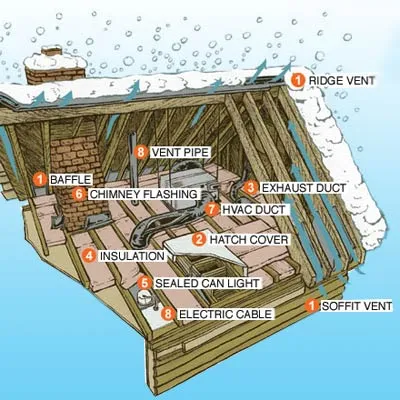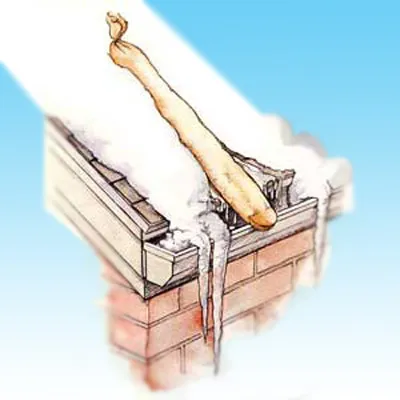Roofing
The Best Methods for Getting Rid of Ice Dams
Effective Ice Dam Removal Methods to Protect Your Home
Icicles may seem charming, but they signal dangerous ice dams that can seriously damage your home. These frozen formations harm roofs, gutters, and interiors. By understanding ice dam removal methods and their prevention, you can protect your property from costly repairs and long-term water damage.
Courtesy of This Old House
What Causes Ice Dams to Form?
Ice dams develop when rooftop snow melts and refreezes along the eaves. Heat from your attic triggers this uneven melting. Then, the water backs up behind the ice and refreezes. This repeated process causes thick ice ridges to form.
Eventually, that trapped water finds its way underneath shingles and into your home. Over time, this can lead to warped floors, stained ceilings, ruined insulation, and even mold. Therefore, understanding and applying the right ice dam removal methods becomes essential.
Fast and Simple Ice Dam Removal Solutions
If you already see signs of an ice dam, don’t panic. You can try these fast removal techniques to limit the damage.
Use a Roof Rake
Remove snow using a long-handled aluminum roof rake. Look for models with wheels to avoid damaging shingles. Gently pull snow down toward the ground. This relieves pressure and slows further melting.
Apply Cold Air to the Leak
If water has already leaked indoors, aim a box fan at the roof’s interior where the leak occurs. This freezes the water temporarily. While not a permanent fix, it can prevent further damage.
Try the Pantyhose Trick
This unconventional method works wonders. Fill a pantyhose leg with calcium chloride ice melt. Lay it across the ice dam. Use a rake or garden hoe to position it safely. The chemical melts through the ice, creating a drainage path.
Ice Dam Removal Methods That Last
Fast fixes help short-term, but long-term protection requires permanent strategies. These ice dam removal methods focus on temperature regulation and insulation.
Courtesy of This Old House
Improve Attic Ventilation
Install ridge vents paired with soffit vents for consistent airflow beneath your roof. Use baffles at the eaves to keep air paths open. Proper ventilation keeps your entire roof the same temperature, which helps prevent ice dams.
Seal the Attic Hatch
Attic hatches and fan openings leak heat. Insulate them with weather-stripped caps made from foil-faced foam board. This prevents warm air from escaping into the attic.
Insulate the Attic Floor
Add enough insulation to keep heat inside your living spaces. Check local codes for recommended insulation levels.
Upgrade Recessed Lighting
Old-style recessed lights leak heat and pose fire hazards. Replace them with IC-rated fixtures that support full insulation coverage.
Flash and Seal Chimneys
Bridge the gap between chimneys and framing using L-shaped steel flashing. Apply fire-safe sealant to keep heat from escaping.
Insulate HVAC Ducts
Seal HVAC joints with mastic. Cover all ducts with foil-faced fiberglass insulation rated R-5 or R-6.
Caulk All Leaks
Use fire-stop sealant to caulk gaps around pipes, wires, and light fixtures. Inspect for insulation discoloration caused by airflow.
Preventive Products You Can Install
Heated Roof Cables
Attach zigzag-patterned heated cables along the roof’s edge. These cables maintain even rooftop temperature. That stops ice from forming on eaves.
Install these cables before winter begins. This proactive solution works especially well in frequently snowy regions.
Plug-In Snow Melters
Several plug-in options melt snow electronically. These tools, while pricier, offer quick action during severe conditions.
Conclusion
Ice dams can damage your home’s structure and interior if not addressed quickly. By following reliable ice dam removal methods, you can manage existing ice and prevent future damage. Start with simple fixes, then work toward permanent solutions for winter protection.
Explore more home care news and safety tips on this website!


